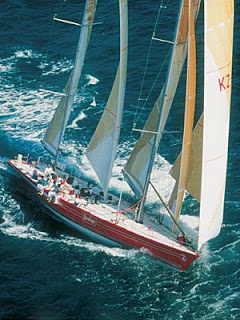
Welcome to the article I had no intention of writing.
I have nothing against the man who rests, hopefully peacefully, behind this article. It's just that when
Peter Blake sailed New Zealand onto the
world-wide-map,
twice, I was living on the far side of the globe & so missed out on the bonding & patriotic fervour that is
la spécialité de la maison du Media.
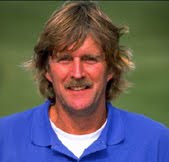
From wiki: "
Sir Peter James Blake, KBE (1 October 1948 in Auckland – 6 December 2001 in Brazil) was a New Zealand yachtsman who won the Whitbread Round the World Race, the Jules Verne Trophy – setting the fastest time around the world of 74 days 22 hours 17 minutes 22 seconds on catamaran Enza, and led his country to successive victories in the America's Cup. In honour of his services to yachting, Blake was appointed a Knight Commander of the Order of the British Empire in 1995"
 Yet another New Zealander favoured by the Queen
Yet another New Zealander favoured by the Queen.
A few weeks ago, I started following
urges to go hither & thither. Each time I would be met by something that brought this man, to mind.
A second hand book entitled
Lion New Zealand which turned out to be about one of his
round the world sailing adventures. A huge road sign warning of delays because the Louis Vuitton Cup challenge was currently taking place in Auckland harbour. My eyes being caught by the huge sails of these yachts as I strolled along the right beach, at the right time.
In the end I gave in & had a quick look at
Peter Blake's wiki page. I really wasn't expecting anything. And indeed I couldn't find anything to warrant the flashing lights, until, that is, I paid extra attention to the place he was killed in Brazil, a place called
Macapá"
Macapá ... is the capital of the state of Amapa in Brazil, on the Amazon River ... The city lies exactly on the Equator, at 0° N, and hosts a monument to this, known as Marco Zero ("Zero Mark")."

There are places to die & then there are
hugley powerful & symbolic places to die. Perhaps if I had not had my attention repeatedly drawn to this man, I might not have given it such consideration. But I did & I have.
I would say that
Sir Peter Blake was New Zealand's
second most revered son, following along nicely in the footsteps of
Sir Edmund Hillary. These two heroic giants (both well over 6 feet tall) intermingle in this tale & lead to some large questions.
I want to show you what Peter Blake's trail has shown me.
Before we set sail I will mention an important particle found within an article by Ellis Taylor. It appeared at just the
rite moment -
"
Some readers ... will recall Georgina Bruni. She was among other occupations, an investigative journalist. Among the subjects that she researched deeply were cults and the paranormal ... Several years ago I heard a whisper. I heard that Georgina was investigating satanic cults within the sailing world. Georgina moved in that world too because she was a director of the Sailing Club, which I didn't know until Nick Pope mentioned this in his obituary for Georgina. Georgina wrote to me in July 2006. She died from cancer on 20 January 2008.
"She was a former director of the Yacht Club, where she was involved in hosting social events for MPs, diplomats and MoD officials. Later on she became a PR consultant and ran a social club, Le Club 2000 (Nick Pope) "
Amazing how many convenient deaths are fired from the
Big 'C'-ilencer.
If certain yachting clubs play host to darkly deeds,
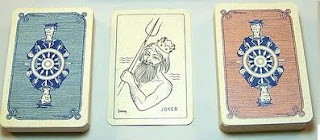
... then let's re-view their
con-tests with
cure-ious eyes.
Are we seeing mighty challenges between masterly sailors or is something else occurring beneath the televised waves?
Keep your eyes peeled for big names, strange events & familiar numbers
We're following in the wake of
Mr Blake.
In the 1979
Fatsnet Race, he took
Line honours and set a course record in
Condor of Bermuda (later renamed
Heath's Condor).

Nevertheless the '
corrected-time' (don't ask me - perhaps that's why
Rolex runs it now)
winner, was the yacht
Tenacious owned and
driven by
Ted Turner (aka Robert Edward Turner III - American media god & progenitor of the cable news network aka
CNN. Also the largest private landowner in, & of America, so says wiki).

Briefly: "
The Fastnet Race is a famous offshore yachting race. It is considered one of the classic offshore races. It takes place every two years over a course of 608 nautical miles...

The race starts off Cowes on the Isle of Wight in England ...

... rounds the Fastnet Rock off the southwest coast of Ireland and then finishes at Plymouth in the South of England"
A further excerpt from
Ellis Taylor's article:-

"
You'll maybe remember 14-year-old Dan Nolan. Hampshire police assumed that he had simply fallen in the water while he was fishing on the quay at Hamble, in the Solent area between the mainland and the Isle of Wight, on New Years Day - In the mecca then, of British sailing, and on a significant occult date. His family and his friends disagreed. Dan was water-wise, a good swimmer, and knew the river well. The waters up and down the Hamble and elsewhere were thoroughly searched; much of it, I'm told by civilian divers, but there was no sign of Dan ..."
Wiki: "
It's [Hamble River's] lower reaches ... being known throughout the sailing world as The Heart of British Yachting."
"...
Damien Nettles ... disappeared from Cowes, on the Isle of Wight, on 2nd November 1996 (a 911 date and during the festival of Samhain). Damien ... has never been seen again."
From BBC News - Monday, 1 July, 2002:
"
I personally think there was an unsavoury character around that night that somehow took Dan," Mrs Nolan said.
'No bodies'
Three miles away, on the Isle of Wight, the family of 16-year-old Damien Nettles had also struggled to convince police that their son was abducted.
"I can only think that someone has done something to my son" -Valerie Nettles
Damien was last seen in a chip shop in Cowes on 2 November 1996. His mother, Valerie, thinks he was taken by one or more of a group of six men caught on the restaurant's security camera. Mrs Nettles said only two of the men have ever been identified and that someone in the group could have lured Damien onto a boat.
With the more recent case of Dan Nolan in mind, she said: "It's interesting that both our sons went missing in the same area within a few years and there's no sign of a body. "You would have thought the at least one of them would have turned up."
One year later a foot was found washed up on a Dorset beach. It was DNA-confirmed as belonging to Daniel Nolan. The family still seek answers "we must emphasise that this does not tell us the circumstances surrounding Dan's disappearance. In fact we feel that this has posed a lot more questions than given answers."
We return to
Cowes, the starting line of the
Fastnet Race.
"
It is believed that the building of an 80 ton, 60 man vessel called Rat O'Wight ... for the use of Queen Elizabeth I sowed the seed for Cowes to grow into a world renowned centre of boat-building ... It was not until the reign of keen sailor George IV that the stage was set for the heyday of Cowes as 'The Yachting Capital of the World.'
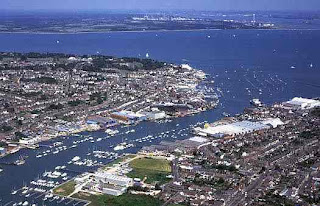
... In 1820, when the Prince Regent became George IV, it was renamed the Royal Yacht Club ... The Royal Yacht Squadron is the most prestigious yacht club in the United Kingdom and arguably the world. Its clubhouse is located in Cowes Castle ...

... on the Isle of Wight ... The club's patron is Queen Elizabeth II and the club’s Admiral is Prince Philip who is also a former club Commodore."
(Wiki) The race that started from here in 1979 was like no other.
It was the 28th Fastnet Race. In Aferris-Land, Mr Moon finds the number 28 circling the runway of JFK's life & death;-
"The number 28 is one of the correspondences of Solomon in kabbalistic numerology; the Solomonic name assigned to 28 is "Beale."On the 28th degree of latitude in the state of Texas is the site of what was once the giant "Kennedy ranch." On the 28th degree is also Cape Canaveral from which the moon flight was launched-made possible not only by the President's various feats but by his death as well, for the placing of the Freemasons on the moon could occur only after the Killing of the King. The 28th degree of Templarism is the "King of the Sun" degree."
In this article we find 28 marks the number of the race that launched a thousand rescue ships.
"LONDON, England (CNN) -- It is still remembered as one of the worst days in the history of modern sailing."
 "... some competitors talked of being hit by a "great fury" at sea"
"... some competitors talked of being hit by a "great fury" at sea"
"[In the] Fastnet tragedy of 1979 ... a freak storm struck over 300 vessels competing in the 600-mile yacht race between England and Ireland.
Mountainous seas and vicious high winds sunk or put out of action 25 boats.
In spite of the biggest rescue operation ... since the Second World War a total of 15 people died. Some of them drowned and others succumbed to hypothermia. Six of those lost went missing after their safety harnesses broke.
"It was a catastrophic event that had far-reaching consequences ... It was devastating."
In total 69 yachts did not finish the race. The former British prime minister, Edward Heath disappeared at the height of the storm, though he later returned to shore safe from harm. The corrected-time winner of the race was the yacht "Tenacious", owned and skippered by Ted Turner, the founder of CNN."
Interesting to find Ted Heath afloat in this - I recall David Icke naming him as a satanist (& so much more).
"I heard this thunderous roar, a bit like I imagine an avalanche would sound. I glanced up through the window and saw this absolutely monstrous wave that was breaking and rolling down like a huge bit of Hawaiian surf."

Memorial to the Fastnet victims.
What I got to wondering was - 'Is this race, more than a race'? Is there anything more underlying Fastnet Rock. Could those going round & round that merry-go-rock be part-taking in an unidentified ritual?

So here's where we make like children & play a game of pretence.
In the following paragraph-world, one thing can turn into another - a lighthouse can become a tree, a light can turn into a flaming fire & sailing ships can become dancers.
So let's scoop up our basket & go rite-berry picking. We'll play with the little kernels of description from around-about the internut & then bake ourselves a speculative pie.
"Native American dances illustrate most of the purposes of dance that is of a ritualistic or ceremonial nature: the war dance ... the dance of invocation ... initiation dances for secret societies ... dances representing cosmic processes"
"A rock, tree, dagger, or woven cloth is a potential home for spirits whose energy can be directed for good or evil."

"On Samhain night we Witches and Pagans and Goddess worshippers’ alike dance around the cauldrons blazing fires and on Beltaine we twirl our dancing ribbons around the Maypole in abandoned merriment"
"The dancing of the May Pole is a Celtic Beltane custom. The use of the May Pole has sexual implications, the pole representing the phallus and the ribbons that are tied to it connect oneself to the Goddess. As they dance, the ribbons would be weaved around the pole and the wreath (the Goddess) would descend down the pole, thus consummating their marriage"
"In Satanism, the altar would be more likely placed in the center of the ritual site...
 ... The site itself would have four corners or a tree in the center ... a fire is lit under the altar ...
... The site itself would have four corners or a tree in the center ... a fire is lit under the altar ...
 ... Dancing would occur around the fire, as well as around the huge tree. Such a tree would be considered sacred, thus the ring of rocks constructed around it
... Dancing would occur around the fire, as well as around the huge tree. Such a tree would be considered sacred, thus the ring of rocks constructed around it."
"
Another location ... associated with ... the devil, is The Tolcarne, a natural high outcropping of rocks above St. Peter’s Church, speculated by others as having been a sacred location for the celebration of ancient rites in pre-Christian times ‘probably in honour of the sun and for divination’. Also known as ‘The Devil’s Rock’ the site is associated with curious traditions."
So how was your playtime?
Once, upon a long time ago, I myself walked nine times round a grand tree & then buried a coin at the base of it, as part of my own ritual to create something I greatly desired.
I have also noted suggestions that
pole dancing is a descendent of the Maypole. I think we do not see what we see.
In the 1922 book "
The Astronomical Knowledge of the Māori Genuine and Empirical", the author, Elsdon Best, notes that the Maori word for the sun is
Ra, (likewise in Polynesia, with some dialectic changes) & as it was in Egypt. He also states that besides Ra, two other words denote the sun -
Komaru &
Mamaru, though are seldom used. All three words, says he, are also applied to a
canoe-sail. Best completes his sentence "
though one fails to see any connection between the two."
I reckon we can make a fairly good case for
sunny sails up or at the very least a bit of godly kayaking. After all,
Ra of Egypt, did use a
water taxi for his daily travels.

In 1954, a huge boat was unearthed at Giza;

"
The Khufu ship is an intact full-size vessel from Ancient Egypt that was sealed into a pit ... at the foot of the Great Pyramid of Giza around 2,500 BC ... It is of the type known as a "solar barge", a ritual vessel to carry the resurrected king with the sun god Ra across the heavens."
The Sun & boats were married to each other a very long time ago, by a culture that knew a LOT. Why I don't know, but I can steer my own research along their secret outlines & see what pops up from beneath the waves.
Looking intimately at mountains over the last few months seems to have made me more attuned to
rocky outcrops - I notice them & wonder about these
bones of the earth. In
Mystery of the White Lions, Zulu shaman Credo Mutwa, tells us that certain rocks connect to the stars.
I have been wondering what
Fastnet connects to.
" ...
it [Fastnet] also had the nickname 'Ireland's Teardrop' as it was the last part of the country seen by Irish emigrants to the United States in the 19th century as they sailed past it." A passer-by who once passed by the 'Teardrop'.
A passer-by who once passed by the 'Teardrop'."
THE wreck of the ship that went to the assistance of the Titanic may contain a multi-million gold windfall for the Irish government."
"She [Carpathia] was part of a convoy when she was torpedoed on 17 July 1918 off the east coast of Ireland by the German submarine U-55, the explosions killing five crewmen. The Carpathia listed to port and sank bow first ... American author and diver Clive Cussler announced that his organization, NUMA, had found the wreck in the spring of 2000, at a depth of 500 ft (150 m). After the submarine attack Carpathia rolled over and landed upright on the sea floor. NUMA gave the location of the wreck as 120 mi (190 km) off Fastnet."A touch of etymology:- "
Carpathian - mountain range of Eastern Europe, from Thracian Gk. Karpates oros, lit. "Rocky Mountain"
"
Fastnet Rock was south of a[n asumed] mid air collision between two Royal Air Force Avro Shackleton MR.2 (WG531 and WL743) on the 11 January (111) 1955. Both aircraft were on a night time training flight after taking off from RAF St Eval (no I didn't make that up) and both No. 42 Squadron. All 9 crew of both Shackleton died after crashing into the sea.""
The first Fastnet lighthouse was built in 1853 and was constructed of cast iron. A light shone for the first time on January 1st 1854." (Wiki)
January 1st, (2002) - Dan Nolan disappears - "
a significant occult date"
(Ellis Taylor).I had thought that by now I would have been well on my way round the world in this article - instead I haven't really moved very far from where I started - I did not realise that
Fastnet had so much to reveal.
I was going to show you a strange little bit I'd found on lighthouses, but a previous memory jumped me unsuspectedly & so I guess we stay here for now & we'll venture further out to
see, sea, see in the next exciting instalment.
 I loved Dr Who as a child, well actually as an (apparent) adult too.
I loved Dr Who as a child, well actually as an (apparent) adult too.
 And I had a great pleasure in remembering the man who was the irresponsible, but totally heart friendly 'Tristan' (Peter Davison), in All Creatures Great & Small. He played a vet in that series before branching out to become a Doctor-stroke-Time Lord.
And I had a great pleasure in remembering the man who was the irresponsible, but totally heart friendly 'Tristan' (Peter Davison), in All Creatures Great & Small. He played a vet in that series before branching out to become a Doctor-stroke-Time Lord.
A few years ago I watched a series called Mrs Bradley Mysteries, as I'm a sucker for a whodunnits. Tristan played Inspector Christmas - the policeman who's never quite smart enough to solve the puzzle without the aid of a crime-solver extraordinaire. The Mrs Bradley series consisted of 6 episodes only - all went 'as usual' for the first five.
Then something happened in the last episode.
Two years ago a wise woman of my acquaintance wrote this on the subject:-
"A dark & nasty little story it was indeed, called the Worsted Viper, involving ritual murder with symbolism encrusted throughout."
The creepy storyline;
"A vicar's daughter called 'Chastity' is found murdered with a worsted viper (a kind of yarn made into a snake shape with a snakes head at one end) wrapped three times around her neck and her hair cut off. Seems the murderer is copycat of the late Black Jack Briggs who liked his female sacrifices as virgins"
Tonight I was reminded of where those ritual murders took place.
"Cecily ... is the daughter of the chauffeur George and is to be married when she is kidnapped. We see her near the end of the episode held prisoner in a lighthouse, hands tied to the arms of a chair and gagged with a white cleave. Dad rushes in and saves our heroine just in the nick of time as the fiend is strangling her."
The fiend turns out to be In Spectre Christmas aka 'Tristan'. Ok an unexpected twist you may say, but the inSpectre then rabidly spews forth strange words that sounded like an incantation - at the time it was really creepy. Let me liken the experience to watching an episode of Scooby Doo & finding out that Scooby is a satanic serial killer (Scrappy we might believe, but not Scooby, surely).
I wrote about it & more the day after, as a form of exhorcism. Perhaps if I watched it again I would now marvel at my response, or then again perhaps not - I found this; -
"From whose pen did this fiction come? Because it most certainly wasn't Gladys Mitchell. All I can say is: Inspector Christmas? Who he? Even if you were not familiar with the original stories, I found that final unmasking, in The Worsted Viper, nonsensical and unbelievable... I don't know if any further episodes of the TV series are planned, but I do know that I shan't be watching them."
Here's a little bonus feature that I didn't know back then; -
"This was shown in the UK on February 6 2000" - you should recognise that date by now - it's Queen Elizabeth II's throne ascendant date.
WARNING: You are now entering a biased departure zone. (Biased, because the use of a lighthouse as the location for ritual murder in the above tv episode has coloured my research & departure, because we'll take a break after that.
I hadn't realised how much lighthouses are beacons & beckoners of tell-tale death. I wonder if it's a case of authors sensing something on a slightly deeper, creepier level.






End of picture show.
Now we come back full circle to Dr Who again.
How I used to love that show. I can't watch it anymore. The strength of feelings that I raised in Bonding with a Time Lord overode any pleasure & I have often wondered if the change I felt in Peter Davison was symbolised or even cretaed during another episode of Dr Who that left a strange taste in my mouth;-
"Omega is basically the Time Lord equivalent of Satan, fallen into an antimatter universe, continuing to exist only through sheer ego, and yearning to walk this world again. Last time around, he tried to drag the Doctor in to take his place so he could leave. This time, with help from an unseen shadowy Time Lord traitor on Gallifrey, he escapes from the anti-matter universe and attempts to bond with the Doctor’s body, to create a new form for himself and live again in our universe."
At the omega, I mean the end, the Dr sends Omega back to whence he came ... or was that a trick of the light?
Of possible interest: That story is set in Amsterdam
"Why Amsterdam? Apparently the stellar pheonomenon which Omega used to escape into our universe (the Arc of Infinity) intercepts Earth around here, and he needed a place below sea level in which to do the conversion."
We return to non-medicinal lighthouses.

"The cursed island of Fang Rock off the south coast of England is a place of rumour and tales of beasts from the sea. Three lighthouse men at the turn of the century face their fears when something comes in from the sea which brings death to all it touches."
"Season 15 opens with what has been aptly described as Agatha Christie’s Ten Little Indians set in a lighthouse in the early days of the 20th century ... "Horror of Fang Rock” is one of “Doctor Who”’s creepier entries. It proves that a story made on styrofoam sets, with a monster so poorly made that the props kept melting under the studio lights, can still be edge-of-your-seat viewing... The story opens the 4th (and exact middle) of Tom Baker’s seven seasons as the Doctor. As a midway point to the Baker years, “Fang Rock” is intriguing in that it not only hearkens back to the gothic horror of his earlier years, but also serves as a window on the series’ future mayhem, when Baker the actor would start acting against the scripts and run amok of the producers’ control." (Film Forensics)
... hmmmm what have we here, another Doctor starts metamorphising.

I found this story strange, ... ahh I'm not the only one: -
"The biggest drawback of this story is that the death toll couldn't possibly get any higher, with every single guest character buying the farm before the story is over. In the first place, that just sucks. The story is just not as enjoyable for having such an end result... And what's all the excess death in aid of? Fulfilling the poem that the Doctor recites near the end as though it's some kind of Marie-Celeste-like prophecy? The glee with which he quotes it adds to the impression that he doesn't care a fig for any of the people ... They're all dead, and he wants to smile and put it poetically. What's up with that? (Lyratek.com)
For fairly obvious reasons Leela (Louise Jameson) was very popular with men folk, so I find it rather strange that ...
 ... with her undoubted visual accessories, the ptb behind Dr ? decided that she needed a change of eye colour;
... with her undoubted visual accessories, the ptb behind Dr ? decided that she needed a change of eye colour;
"Although Jameson's eyes are naturally blue, as Leela she initially wore red contact lenses to make them brown. However, the contact lenses severely limited her vision, and producer Graham Williams promised her she could stop wearing them. To explain the change in-story, writer Terrance Dicks wrote a scene in the 1977 serial Horror of Fang Rock in which Leela's eyes suffer "pigment dispersal" and turn blue after viewing the explosion of the Rutan ship." (Wiki)
"...
in the final scene ... reason is given to allow Louise Jameson to chuck the irritating cosmetic contact lenses she'd been forced to wear. I really question why she was forced to begin wearing them in the first place. The colour of Leela's eyes is too unimportant to warrant contacts in the first place - it affects nothing in her early stories and is barely noticeable on the small screen."
(Lyratek.com) “I too used to believe in magic”, she tells Adelaide, “but the Doctor has taught me about science - it is better to believe in science” (Leela).
“I too used to believe in magic”, she tells Adelaide, “but the Doctor has taught me about science - it is better to believe in science” (Leela).
"Doctor Who's regenerations were modelled on bad LSD trips, internal BBC memos have revealed. The Doctor's transformations were meant to convey the "hell and dank horror" of the hallucinogenic drug, according to papers published on the BBC Archive." (BBC News)
In a sense Dr Who was born out of the death of JFK - the first Doctor took his first step the day after JFK took his last;
"Doctor Who first appeared on BBC television at 17:15 GMT on 23 November 1963"

On
22 November, 1987 JFK's 24th anniversary,
Dr Who made centre stage again, by being knocked off centre stage, in the
Max Headroom broadcast signal intrusion incident - a signal hijacking in Chicago, USA.
"
On 22 November 1987 a broadcast of Horror of Fang Rock by Chicago television station WTTW was interrupted for around 90 seconds by a pirate broadcast featuring an individual disguised as television character Max Headroom. The incident made national headlines and the persons responsible were never identified."
Behind
Fang Rock lay a real life mystery.
"
Many elements of the episode were based on a poem, Flannan Isle by Wilfred Wilson Gibson (indeed the Doctor quotes from it at the end of the story); the poem itself was inspired by the mysterious disappearance of three lighthouse keepers from the Flannan Isles in 1900."
"The Flannan Isles are a small island group in the Outer Hebrides of Scotland, approximately 32 kilometres (20 mi) west of the Isle of Lewis ... The archipelago is also known as 'The Seven Hunters' ...

...
They are the location of an enduring mystery which occurred in December 1900, when all three lighthouse keepers vanished without trace ... Theories abounded and resulted in "fascinated national speculation." "

"
A dreadful accident has happened at the Flannans. The three keepers, Ducat, Marshall and the Occasional have disappeared from the Island. The clocks were stopped and other signs indicated that the accident must have happened about a week ago. Poor fellows must have been blown over the cliffs or drowned trying to rescue a crane or something like that." Telegram to the
Northern Lighthouse Board dated 26 December, 1900.
This takes us at last to the strange info on lighthouses that I was going to mention waaaaay back.
While looking into the construction of Fastnet lighthouse I came upon some unusual names & descriptions;
"The Corporation of Trinity House", "... applied for the sanction of the Elder Brethren of Trinity House", & "...the Commissioners of Irish Lights".
What was this thought I?
"The Corporation of Trinity House ... is the official General Lighthouse Authority for England, Wales and other British territorial waters (with the exception of Scotland, the Isle of Man, Northern Ireland). It is responsible for the provision and maintenance of navigational aids such as lighthouses, lightvessels, buoys, and maritime radio/satellite communication systems."
Ok sounds fair enough.
"Trinity House is ruled by a court of thirty-one Elder Brethren, presided over by a Master, at present HRH the Duke of Edinburgh. These are appointed from 300 Younger Brethren who act as advisors and perform other
duties as needed. The Younger Brethren are themselves appointed from lay people with maritime experience, mainly naval officers and ships' masters."
Pardon?
"The Master of the Corporation (now a merely honorary title) is the Duke of Edinburgh. Previous Masters of Trinity House have included the diarist Samuel Pepys and the Duke of Wellington, and Admiral William Penn (father of William Penn, founder of Pennsylvania)"
Sorry, are we still talking about lighthouses here?
"The Corporation came into being in 1514 by Royal Charter granted by Henry VIII under the name "The Master, Wardens, and Assistants of the Guild, Fraternity, or Brotherhood of the most glorious and undivided Trinity, and of St. Clement in the Parish of Deptford-Strond in the County of Kent." The first Master was Thomas Spert, captain of Henry’s flagship Mary Rose."
Right-o then, so nothing untoward there.

A board meeting to talk about lighthouses at Trinity House circa 1808"
For many years, Trinity House depots were maintained in Harewich, Great Yarmouth, Penzance, Swansea, East COWES and on the Thames"
Hmmm... something sounds familiar.
"
The other General Lighthouse Authorities in other parts of the Britush Isles: Commissioners of Irish Lights & Northern Lighthouse Board (Scotland & Isle of Man)".Some of the 'better people' behind lighthouses "
Elder Brethren during Trafalgar 200"
I uncovered
this by chance, today (dated July 2008) - was going to copy & paste but there's one of those C's inside a circle at the bottom & some people get pretty shirty about
lending things.
Briefly what it says is that the Princess Royal (aka Princess Anne) goes Lady Gaga over lighthouses - just can't seem to get enough of them - five in one month apparently!
"Pharology, the study of lighthouses, is a focus of interest for Princess Anne; she made it an ambition to see personally each of Scotland's 215 lighthouses, often touring them with the Northern Lighthouse Board, of which she is patron." (Wiki)
One of the greatest horror stories of literature descends from lighthouse lineage. Dr Jeckyl & his aside had one Robert Stevenson as their grandpapa:-
"The [Northern Lighthouse] Commissioners' most famous engineer was Robert Stevenson, whose sons David, Alan, and Thomas followed their father into the profession. The Stevenson dynasty built the majority of the Northern lights, in some exceptionally challenging locations. Their lights were some of the engineering masterpieces of their time, notably those at Bell Rock, Skerryvore and Muckle Flugga."
Thomas Stevenson was father to Robert Louis.

to be continued ...............................................
ps Thanks for your help Julie :)
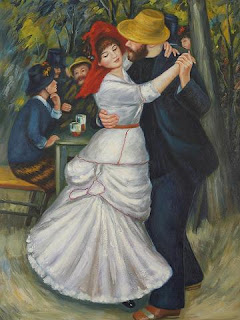
 A Nouvelle Cuisine addition, (though made with the same ingredients), is the commandment to:
A Nouvelle Cuisine addition, (though made with the same ingredients), is the commandment to:
 ... would automatically lead me into heel kick ups today.
... would automatically lead me into heel kick ups today.

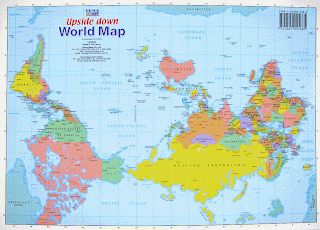


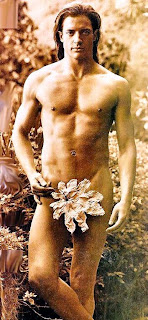



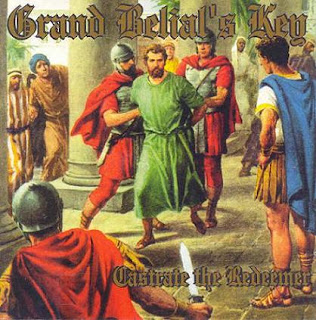



 "
"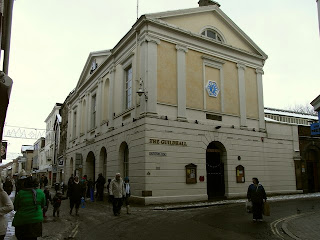 "
"



 During the Tudor's Reign of Terror, the
During the Tudor's Reign of Terror, the 










 ... then let's re-view their con-tests with cure-ious eyes.
... then let's re-view their con-tests with cure-ious eyes.











 ...
... 



 I loved Dr Who as a child, well actually as an (apparent) adult too.
I loved Dr Who as a child, well actually as an (apparent) adult too.








 ... with her undoubted visual accessories, the ptb behind Dr ? decided that she needed a change of eye colour;
... with her undoubted visual accessories, the ptb behind Dr ? decided that she needed a change of eye colour; 

 ...
... 


